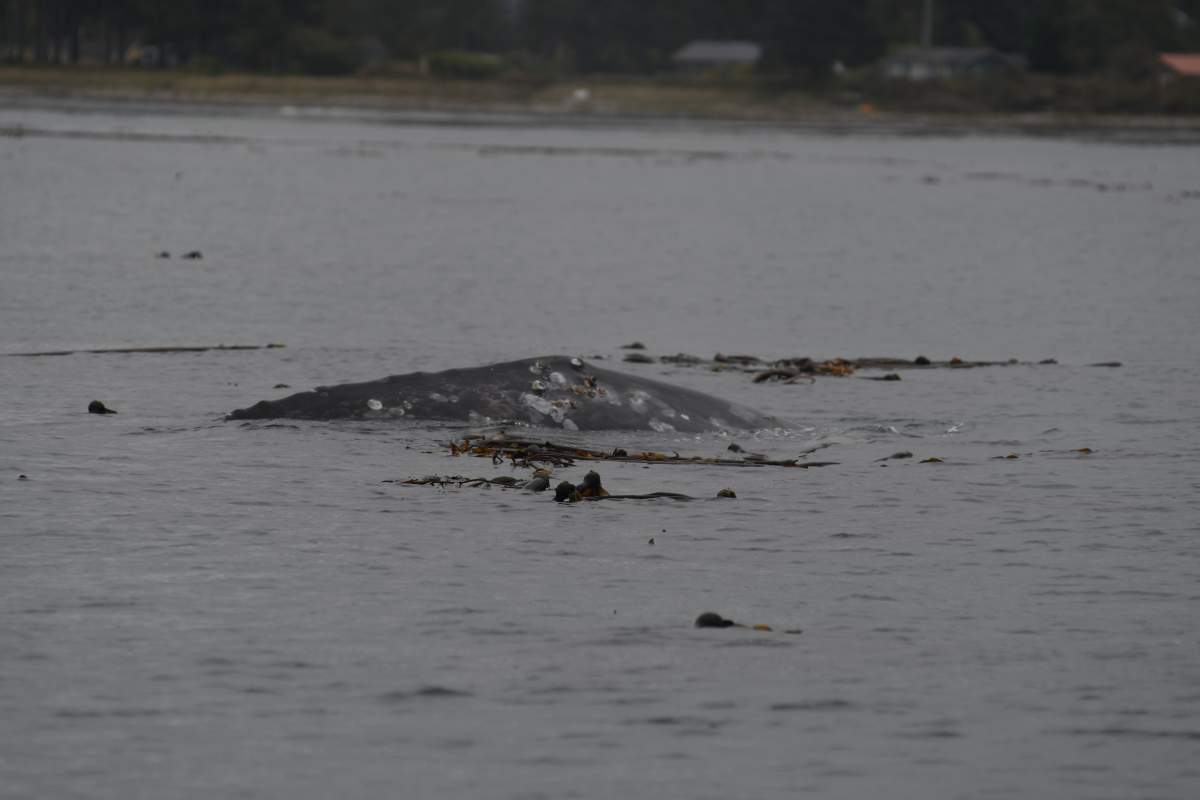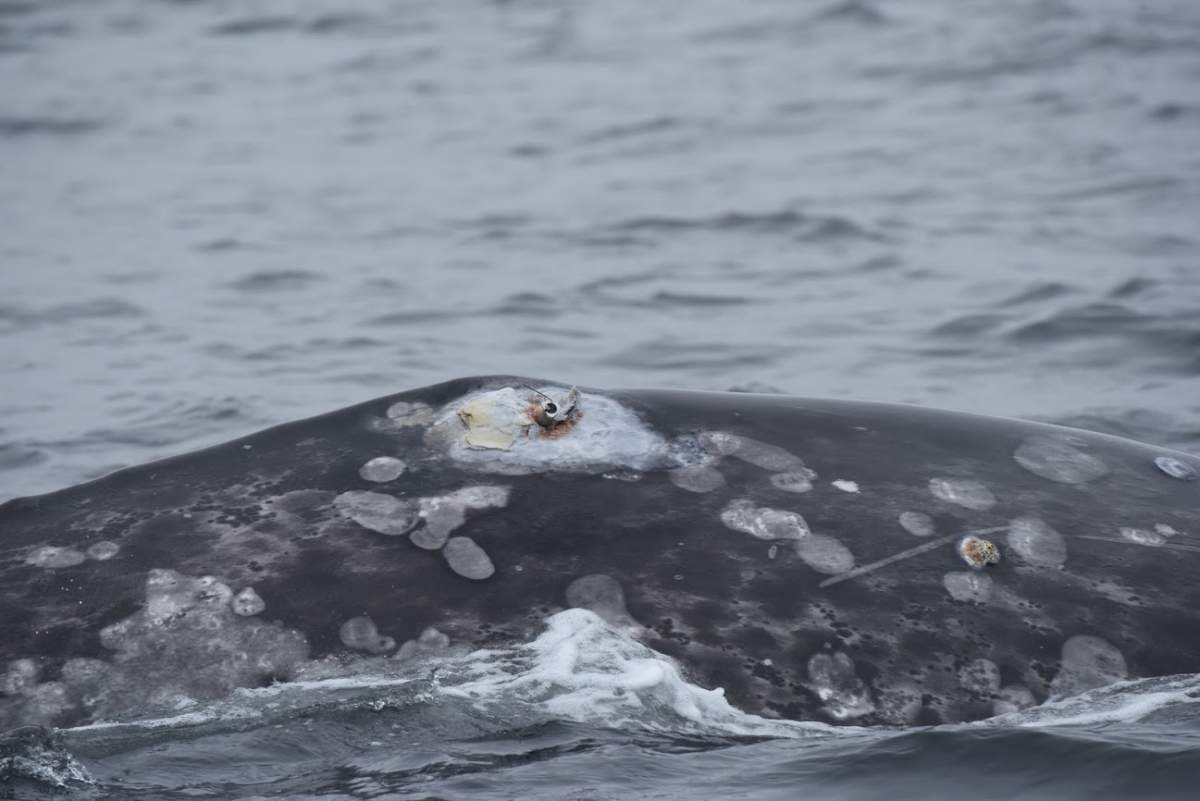Officials with the National Oceanic and Atmospheric Administration (NOAA), Fisheries and Oceans Canada and Vancouver Aquarium/Ocean Wise are currently monitoring a grey whale off the B.C. coast after some unusual lesions were spotted on its body.

The whale, named Chocolate, is part of the Pacific Coast Feeding Group and a pilot study between the U.S. and Canada to better understand the late-season habitat use and movements of this unique group of whales.

On Sept. 8, 2020, researchers with NOAA Fisheries satellite-tagged this particular whale as it was in good condition and the risk to the animal was low.
Researchers said over the following months the whale was monitored and no abnormalities were seen around the tagging site.
Data showed that the whale made multiple trips from Washington to B.C. and on March 16, 2021, a contractor for NOAA Fisheries photographed the whale in Barkley Sound, B.C.

Get breaking National news
This is the first time the photograph showed a lesion around the tagging site and two lesions on the opposite side of the whale. However, the contractor said the animal was with other whales and appeared to be in good condition and behaving normally.

Fisheries and Oceans Canada and Vancouver Aquarium/Ocean Wise officials then conducted a vessel and drone survey on March 28 to collect additional photographs.
The team then gave Chocolate antibiotics on March 31 and April 1 and collected a breath sample.
A panel of U.S. and Canadian whale experts was formed on March 31 to review and advise on the best treatment for the whale.
NOAA officials said that right now, it appears that the lesion around the tag “was within the range of reaction that would be expected as the body extruded the tag. However, it was unusual compared to other records of whales tagged with similar tags.”
It is not determined that the lesions on the opposite side of the whale were related to the tagging but the whale will be closely monitored for any changes to its condition.

Chocolate is part of a small group of about 250 grey whales that make up the Pacific Coast Feeding Group.
However, NOAA said unlike most grey whales, they do not make the long migration along the west coast of North America from wintering and calving areas off the coast of Baja California, Mexico to summer feeding grounds in the northern Bering and Chukchi seas. They usually remain in feeding areas off the Pacific Northwest and British Columbia from June through October.
The Pacific Coast Feeding Group is part of the Eastern North Pacific grey whale population. This population has fully recovered from the whaling era and was taken off the U.S. endangered species list in 1994. It now numbers around 20,000.






Comments